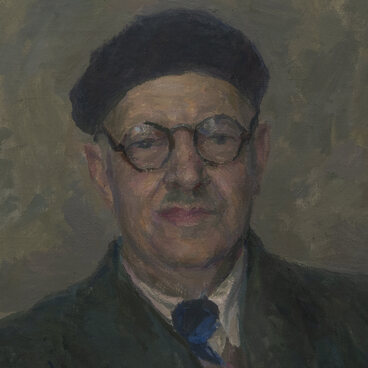During the Great Patriotic War, Kaluga Oblast was occupied by the Nazis from October to December 1941. Partisan detachments were created in several areas. They provided all possible assistance to the army including going on reconnaissance, reporting the location of enemy headquarters and depots, mining the roads, and destroying German vehicles.
The Ugodsko-Zavodskaya operation was one of the most large-scale ones. It involved four partisan groups and a special unit of the Western Front. On the night of November 24, 1941 the partisans attacked the headquarters of the German corps and a major garrison in the village of Ugodsky Zavod — today’s Zhukov. They killed about 600 officers and soldiers, over a hundred vehicles, four tanks, an armored vehicle, ammunition, a warehouse with fuel and seized valuable headquarters documents.
Mikhail Guryanov, 38, chairman of the district executive committee, distinguished himself in this operation. He was wounded and captured, but despite brutal torture, he did not give up his comrades or his mission. Mikhail Guryanov was publicly executed by hanging. Only a month later, after the plant was liberated from the invaders, Guryanov’s remains were buried with honors. On February 16, 1942 the Decree of the Presidium of the Supreme Soviet of the USSR on awarding partisans who took part in the battle for Moscow with the title of Hero of the Soviet Union was published. Zoya Kosmodemyanskaya and Mikhail Guryanov were awarded the title posthumously.
The portrait of Mikhail Guryanov was painted by the young artist Vladimir Lebedev. In 1941 Volodya finished 9 classes at School named after S. T. Shatsky and on the instructions of the Chairman of the Ugodsko-Zavodskoy District Executive Committee evacuated the collective farm cattle to the Vladimir region. There he read an article in the “Pravda” newspaper about the deaths of Mikhail Guryanov and Zoya Kosmodemyanskaya and the posthumous title of Hero of the Soviet Union awarded to them. Volodya Lebedev drew the portraits of the heroes from the newspaper photo, using square drawing technique which he had been taught at the Art studio at Shatsky school. The portrait hung in the local school throughout the war, and Volodya’s mother, a teacher, took the portraits with her when she left the evacuation area. Vladimir Nikolaevich Lebedev, who became a famous Moscow artist, presented the portrait of the hero to the Museum of the History of Obninsk.
The Ugodsko-Zavodskaya operation was one of the most large-scale ones. It involved four partisan groups and a special unit of the Western Front. On the night of November 24, 1941 the partisans attacked the headquarters of the German corps and a major garrison in the village of Ugodsky Zavod — today’s Zhukov. They killed about 600 officers and soldiers, over a hundred vehicles, four tanks, an armored vehicle, ammunition, a warehouse with fuel and seized valuable headquarters documents.
Mikhail Guryanov, 38, chairman of the district executive committee, distinguished himself in this operation. He was wounded and captured, but despite brutal torture, he did not give up his comrades or his mission. Mikhail Guryanov was publicly executed by hanging. Only a month later, after the plant was liberated from the invaders, Guryanov’s remains were buried with honors. On February 16, 1942 the Decree of the Presidium of the Supreme Soviet of the USSR on awarding partisans who took part in the battle for Moscow with the title of Hero of the Soviet Union was published. Zoya Kosmodemyanskaya and Mikhail Guryanov were awarded the title posthumously.
The portrait of Mikhail Guryanov was painted by the young artist Vladimir Lebedev. In 1941 Volodya finished 9 classes at School named after S. T. Shatsky and on the instructions of the Chairman of the Ugodsko-Zavodskoy District Executive Committee evacuated the collective farm cattle to the Vladimir region. There he read an article in the “Pravda” newspaper about the deaths of Mikhail Guryanov and Zoya Kosmodemyanskaya and the posthumous title of Hero of the Soviet Union awarded to them. Volodya Lebedev drew the portraits of the heroes from the newspaper photo, using square drawing technique which he had been taught at the Art studio at Shatsky school. The portrait hung in the local school throughout the war, and Volodya’s mother, a teacher, took the portraits with her when she left the evacuation area. Vladimir Nikolaevich Lebedev, who became a famous Moscow artist, presented the portrait of the hero to the Museum of the History of Obninsk.


